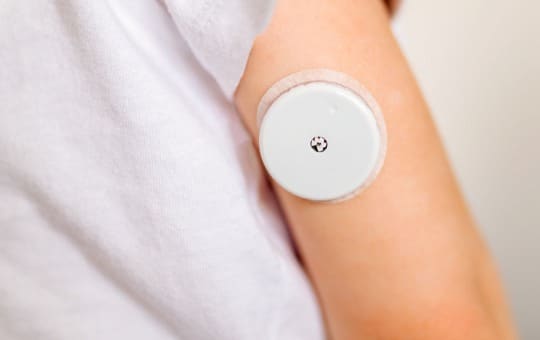In the ever-evolving landscape of diabetes management, technological advancements have paved the way for innovative solutions that revolutionize the way individuals monitor and control their blood sugar levels. One such breakthrough is Continuous Glucose Monitoring (CGM), a game-changing tool that offers real-time insights into glucose fluctuations, empowering individuals with diabetes to make informed decisions about their health. Let’s delve into the world of CGM and explore how can CGM diagnose diabetes effectively.
Understanding Continuous Glucose Monitoring (CGM)
Continuous Glucose Monitoring involves the use of small sensors placed under the skin to monitor glucose levels in the interstitial fluid. These sensors, connected to a wearable device, provide continuous readings of blood sugar levels throughout the day and night. Unlike traditional blood glucose monitoring methods, which offer snapshots of glucose levels at specific points in time, CGM provides a comprehensive view of glucose trends, patterns, and fluctuations in real time.
Benefits of CGM in Diagnose Diabetes
Real-Time Feedback: CGM offers immediate feedback on blood sugar levels, allowing individuals to make timely adjustments to their diet, exercise, and medication.
Improved Glycemic Control: By providing continuous monitoring, CGM helps individuals achieve better glycemic control, reducing the risk of hyperglycemia and hypoglycemia.
Insightful Data Analysis: CGM generates a wealth of data, including time in range, glycemic variability, and trends, enabling individuals and healthcare providers to gain deeper insights into glucose management.
Enhanced Quality of Life: With CGM, individuals experience fewer finger pricks and enjoy greater freedom and flexibility in diagnose diabetes.
Early Detection of Trends and Patterns: CGM allows for the early detection of trends and patterns in glucose levels, empowering individuals to take proactive steps to prevent complications.
The Role of CGM in Personalized Diagnose Diabetes
One of the most significant advantages of CGM is its ability to provide personalized insights and recommendations based on individual glucose patterns and responses to various factors such as food, exercise, and medication. By analyzing CGM data, healthcare providers can tailor treatment plans to meet the unique needs of each patient, leading to more effective diagnose diabetes management and improved outcomes.
Overcoming Challenges and Limitations
While CGM offers numerous benefits, it’s essential to address the challenges and limitations associated with this technology:
Cost
CGM devices can be expensive, limiting access for some individuals. However, advancements in technology and insurance coverage are making CGM more accessible to a broader population.
Accuracy
While CGM technology has improved significantly over the years, occasional discrepancies between interstitial fluid glucose levels and blood glucose levels may occur. However, continuous advancements in sensor accuracy and calibration algorithms are mitigating this issue.
User Adherence
Some individuals may struggle with wearing and maintaining CGM devices consistently. Education, support, and training programs can help improve user adherence and maximize the benefits of CGM.
Must Read What Should You Consider Before Buying a Glucose Monitor for Home Use?
The Future of CGM in Diabetes Management
As technology continues to evolve, the future of CGM holds immense promise for further enhancing diabetes management. Future developments may include:
Integration with Artificial Intelligence
Integration of CGM data with artificial intelligence algorithms can enable predictive analytics and personalized recommendations for optimizing diabetes management.
Closed-Loop Systems
Advancements in closed-loop systems, also known as artificial pancreas systems, aim to automate insulin delivery based on CGM data, offering individuals with diabetes a more seamless and hassle-free approach to glucose control.
Miniaturization and Wearability
Continued miniaturization and improvement in the design of CGM devices will enhance wearability and comfort, making them more user-friendly and appealing to a broader population.
Also, read more How Does Daily Life Change with a Continuous Glucose Monitor?
Conclusion
Continuous Glucose Monitoring is revolutionizing the way individuals with diabetes manage their condition. Its ability to provide real-time feedback, insightful data analysis, and personalized recommendations empowers individuals to take control of their health and achieve better glycemic control. While challenges exist, ongoing advancements in technology and healthcare delivery are driving the widespread adoption of CGM, ushering in a new era of personalized diagnosis diabetes care. As CGM continues to evolve, its potential to improve outcomes and quality of life for individuals with diabetes remains promising, shaping a brighter future for diabetes management worldwide.


